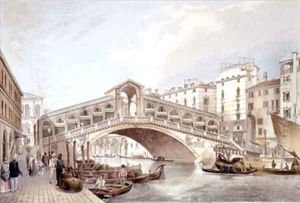Cecchini, Giovanni Battista Paintings
Giovanni Battista Cecchini was an Italian painter and architect who lived during the Baroque period, a time characterized by dramatic expression and elaborate ornamentation. Born in 1628, Cecchini's work reflects the grandeur and dynamism that are hallmarks of the Baroque style. Although not as widely recognized as some of his contemporaries, Cecchini made significant contributions to the art and architecture of his time, particularly in the regions of Northern Italy.
Cecchini's artistic career was marked by both his paintings and his architectural designs. As a painter, he specialized in religious themes, creating altarpieces, frescoes, and canvases that were notable for their vibrant colors, intense light-dark contrasts, and dynamic compositions. These works often featured dramatic narratives, a characteristic of Baroque art aimed at engaging the viewer's emotions and encouraging a spiritual experience.
In architecture, Cecchini contributed to the design and construction of several important buildings and churches. His architectural works are known for their elaborate decorations, intricate details, and the innovative use of space, which aimed to evoke a sense of awe and wonder. Cecchini's ability to blend architecture and artistry exemplified the Baroque ideal of creating immersive environments that reflect the glory and power of the divine.
Despite his accomplishments, Giovanni Battista Cecchini's name is not as prominent in art history as some of his peers. This lack of recognition might be attributed to the overshadowing presence of other giants of the Baroque era, such as Gian Lorenzo Bernini and Caravaggio, whose works defined the period. Nonetheless, Cecchini's contributions to Baroque art and architecture remain valuable for their artistic merit and for the insight they provide into the era's aesthetic and religious sensibilities.
Cecchini's death in 1715 marked the end of a career that spanned nearly a century, a period of significant change and development in European art. His legacy, though not as celebrated as that of some of his contemporaries, is preserved in the paintings and buildings that survive him. These works continue to be studied and admired for their beauty and for the ways in which they encapsulate the spirit of the Baroque period.
